furniture specialist decoration
The specialist decoration and hand painting of furniture, whether free standing or fitted is a necessary skill for the decorative artist. It is often the case that existing pieces need to be bought into a new scheme, or that new pieces be decorated in sympathy with an established look. Sometimes free standing pieces are decorated as stand alone items.
fitted furniture and accessories
shabby chic furniture specialist decoration
Most specialist paint finishes can be applied to furniture and it is usual to use the techniques of distressing, antiqueing, gilding, cracklure and patination to create for example the muted palette of Scandinavian or French Country style. These 'shabby chic' distressed paint effects artfully present to the eye a piece of furniture as having gone through many decades or even centuries of use. Often the use of historic paints such as milk paint or linseed paint will enhance the look. The result is a mellow and warm piece of furniture.
specialist decoration of painted furniture in practice
The decorative artist will adopt techniques and media that create the required look for a given situation, whether this is a distressed paint effect, dragging, a stipple glaze and wipe or a number of other techniques. All are designed to bring out the best features of the cabinetry and create a harmony with its environment.
Furniture specialist decoration employing more complicated designs incorporating stencilled or hand painted ornament is available when required. Every commission is unique and is treated as such, having its own creative potentials and parameters. The hand painting of furniture is an important element in the repertoire of the specialist decorator and decorative artist.
The history of decorative hand painted furniture
Since antiquity furniture has been embellished with paint, paint effects and ornamentation. The practice was widespread during the renaissance and certainly existed in the medieval period. Few examples of very early hand painted furniture survive since furniture made for painting was generally constructed of soft wood and susceptible to the ravages of time. It is known that much of the furniture from the eighteenth century was painted and of some sophistication, being designed to work with the themes of particular rooms. Examples can be found in the Chinese style, sometimes even in the imitation of blue and white porcelain. Painted furniture changed in look through successive changes in period style. Running alongside the refined elegance and expense of architect designed pieces of furniture has been the vernacular or folk tradition of hand painted furniture and decorative accessories. Less delicate and more robust with a naive vitality of expression. Sometimes these rustic styles would diverge from the folk tradition in imitation of the styles at court, Biedermeier and the Provincial Swedish look are examples of this tendency.


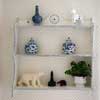 Shabby chic distressed shelves
Shabby chic distressed shelves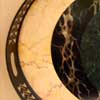 Painted Decorative accessories
Painted Decorative accessories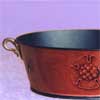 Hand painted decorative accessories
Hand painted decorative accessories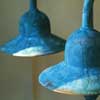 Verdigris specialist decoration
Verdigris specialist decoration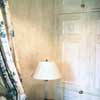 Distressed painted furniture
Distressed painted furniture 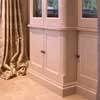 Specialist decoration of fitted furniture
Specialist decoration of fitted furniture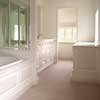 Specialist decoration of furniture
Specialist decoration of furniture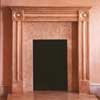 Shabby chic distressed fire place
Shabby chic distressed fire place